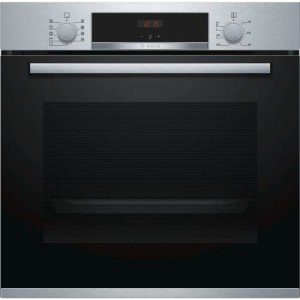The Rise of Built-In Ovens: A Seamless Approach to Modern Cooking
In modern kitchens, where style visual appeals mix effortlessly with functionality, one home appliance stands apart as a real game changer: the built-in oven. As house owners and chefs alike continue to look for innovative services that enhance their cooking experience, built-in ovens have ended up being progressively popular. This short article checks out the benefits, factors to consider, and trends surrounding built-in ovens, highlighting why they are an important function in contemporary cooking areas.
What is a Built-In Oven?
A built-in oven is a cooking area device developed to be integrated into the cabinets of a cooking area rather than standing alone. Unlike standard freestanding ovens, which can be moved and placed anywhere, built-in ovens been available in different styles and sizes to fit particularly within designated areas. Readily available in single or double configurations, these ovens use a structured look that complements modern cooking area styles.

Benefits of Built-In Ovens
1. Space-Saving Design
One of the most appealing benefits of built-in ovens is their space-saving style. By integrating the oven into kitchen cabinetry, you can maximize important counter and flooring area. This is especially beneficial in smaller sized kitchen areas, where making the most of space is important. Built-in ovens can be set up at eye level, making them more accessible and reducing the requirement to flex down.
2. Visual Appeal
Built-in ovens add to a streamlined and cohesive kitchen design. Available in various finishes-- such as stainless steel, black, white, and custom kitchen cabinetry-- they can mix flawlessly into the total decoration. in built oven Ovens & Hobs enhances the cooking area's visual harmony and elevates the space, producing a contemporary and sophisticated atmosphere.
3. Boosted Functionality
Numerous built-in ovens come equipped with advanced cooking innovations, such as convection cooking, steam ovens, and clever features. These improvements enable flexible cooking alternatives, making it much easier to achieve professional-level outcomes at home. Smart built-in ovens can even link to Wi-Fi, allowing users to manage the oven remotely, get alerts, and access a range of cooking programs and recipes.
4. Improved Ventilation
Due to the fact that built-in ovens can be integrated with kitchen area hoods and ventilation systems, they can assist maintain much better air quality and lower cooking odors. This is specifically significant for those who love to cook with aromatic spices and components, as a reliable ventilation system can keep the kitchen area comfy and welcoming.
5. Modification Options
Built-in ovens use a wide variety of personalization choices to fit individual cooking designs and requirements. From professional-grade appliances with several cooking modes to compact styles for smaller sized kitchen areas, house owners can pick the oven that fits their specific requirements. Many producers likewise use adjustable front panels, enabling you to match the oven's appearance to your cabinetry for a truly unified appearance.
Considerations When Choosing a Built-In Oven
While built-in ovens have many advantages, there are very important factors to consider to bear in mind before making a purchase:
1. Rate
Built-in ovens typically include a greater cost tag than their freestanding equivalents due to their style and installation requirements. It's important to aspect in both the expense of the oven and any additional expenses associated with kitchen cabinetry modifications or installation.
2. Installation Requirements
Setting up a built-in oven typically needs expert help, specifically if you require to customize existing cabinetry. Make sure that you think about any expenses related to installation, including labor and potential kitchen cabinetry changes.
3. Size and Dimensions
Before buying a built-in oven, determine the designated area accurately to guarantee an appropriate fit. Built-in ovens can be found in numerous sizes and setups, so selecting one that aligns with your requirements and kitchen design is important.
4. Way of life and Usage
Consider your cooking practices and requires when selecting a built-in oven. If you frequently host large events, a double oven may be more useful. On the other hand, if you have a compact kitchen area, a single-wall oven might be sufficient.
Patterns in Built-In Ovens
The cooking area device market is constantly progressing, and built-in ovens are not exempt from emerging trends. Some present trends consist of:
Smart Technology Integration: With the increase of wise home innovation, built-in ovens now often feature connection options. This enables users to keep an eye on cooking development and adjust settings through mobile apps.
Energy Efficiency: As sustainability becomes a concern, lots of makers are buying energy-efficient built-in ovens that minimize energy consumption while keeping efficiency.
Multi-functional Designs: Built-in ovens now provide functions such as air frying, slow cooking, and steaming, offering adaptability that satisfies a wide variety of cooking approaches.
Conclusion
Built-in ovens certainly represent a best mix of style, function, and convenience in today's kitchens. As more house owners select this modern solution, the focus moves to developing a cooking area that is as visually pleasing as it is practical. Whether you are building a new home or renovating your kitchen, thinking about a built-in oven might raise your culinary experience and change your kitchen into a stylish and functional haven. With a variety of choices available and ongoing innovations in technology, built-in ovens stay a standout choice for both newbie cooks and cooking lovers alike.
